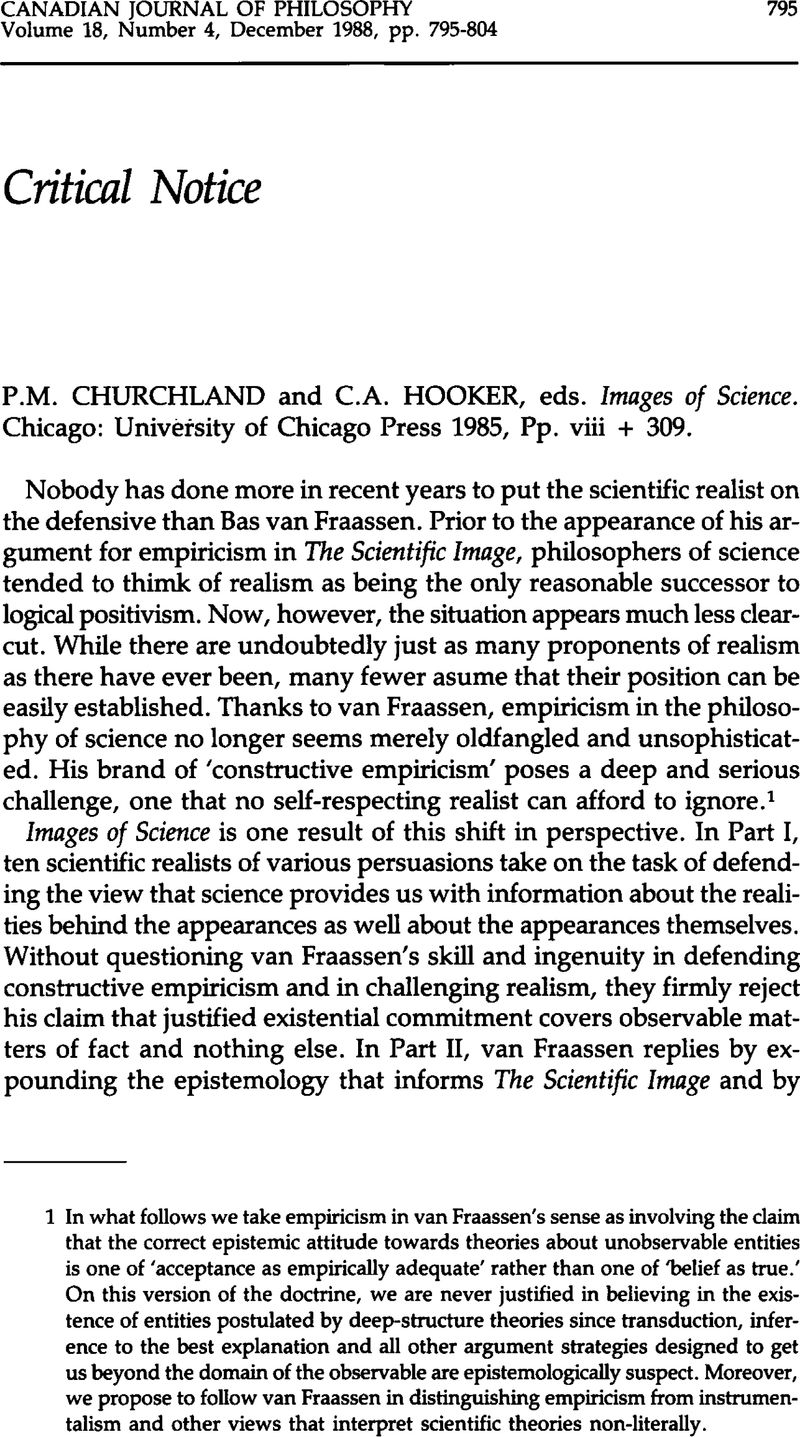No CrossRef data available.
Article contents
P.M. Churchland and C.A. Hooker, eds. Images of Science. Chicago: University of Chicago Press 1985, Pp. viii + 309.
Published online by Cambridge University Press: 01 January 2020
Abstract

- Type
- Critical Notice
- Information
- Copyright
- Copyright © The Authors 1988
References
1 In what follows we take empiricism in van Fraassen's sense as involving the claim that the correct epistemic attitude towards theories about unobservable entities is one of ‘acceptance as empirically adequate’ rather than one of ‘belief as true.’ On this version of the doctrine, we are never justified in believing in the existence of entities postulated by deep-structure theories since transduction, inference to the best explanation and all other argument strategies designed to get us beyond the domain of the observable are epistemologically suspect. Moreover, we propose to follow van Fraassen in distinguishing empiricism from instrumentalism and other views that interpret scientific theories non-literally.
2 This latter feature of van Fraassen's approach has been widely welcomed by realists, many of whom favour some version of naturalized epistemology. Indeed Wilson hazards the suggestion that ‘many readers will have found this view of “observation” one of the most appealing ideas to be found in the first half of The Scientific Image’ (223).
3 Van Fraassen also dismisses the problem of the ‘faithful dog and supersonic whistle’ (which turns on the observation that dogs can hear things that we cannot: see 256). Here he again digs in his heels and argues that the objection misses the mark since any conclusion about the ability of dogs to hear whistles rests on our previously having accepted certain theories about sound spectra and canine physiology as empirically adequate.
4 Recall that Berkeley accepted that things exist when not observed provided that they are observable and that Hume accepted the existence of the missing shade of blue.
5 Here it should be noted that the issue of whether there is a non-circular, global justification of science - which van Fraassen takes to be especially important (see especially 258-63) - is largely irrelevant. Indeed, it is even debatable whether Boyd means to provide a justification of this sort, his position being far closer to the kind of naturalism often associated with Quine than van Fraassen allows.
6 Wilson takes van Fraassen to have ‘no truck with the acquaintance treatment of observationality’ (230) and to be committed instead to elucidating the observational content of theories ‘internally’ (222), which is a position that van Fraassen now rejects (see his reply to Wilson). This does not, however, detract from his point that ‘many antirealist sentiments ultimately derive from [the acquaintance treatment of observationality]’ (230), still less from his observation that van Fraassen is often torn between an acquaintance conception of observation and a more sophisticated ‘internalist’ one.




